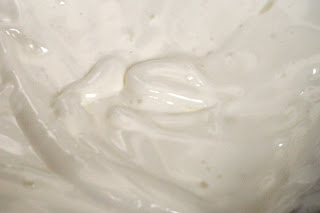Hi everybody,
You may notice some changes with this blog... thanks to my talented friend Monica there is now a full website - you can visit it here. All the galleries and contact info are available on the new site and can be accessed using the navigation links on the top of the page.
This blog will be used much as it has in the past... to document my few successes and many pitfalls in the kitchen for those interested in reading about such things :)
Enjoy the new layouts!
-Danielle
I've been making (I use the term loosely; ruining and massacring also frequently apply) macarons for nearly a year and I've been a firm adherent of the French meringue method (recipe here). I've gotten the hang of it and have even learned to troubleshoot some bad outcomes but it's still an incredibly temperamental process and the results are hardly guaranteed even when the steps are followed to the letter. I've decided to finally give the Italian meringue method a go. It may seem daunting and certainly requires more utensils, but it's worth it. The main difference between this method and the French meringue method is the added step of "cooking" the meringue mixture.
Ingredients:
60g + 60g egg whites
35g + 150g sugar
150g icing sugar
150g ground almonds
50ml water
Directions:
Line baking sheets with parchment paper. Use a food processor to grind icing sugar and almonds until fine (this is not 100% required, but you'll have much smoother shells if you take the time to complete this step) and set aside in large mixing bowl. Using a stand mixer, whip 60g egg whites until soft peaks form and then add 35g sugar. Keep beating until mixture reaches firm peaks and has a consistency like shaving cream. At the same time, bring water and 150g sugar to a rolling boil; heat syrup mixture until it registers 118C on a candy thermometer.
Once the syrup reaches desired temperature, remove from heat and slowly add to the whipped meringue by dripping it down the side of the mixing bowl. Continue to whip this mixture at medium speed until a shiny Italian meringue forms.
Back to the dry ingredients: add the remaining 60g of egg whites to the dry mixture and fold until it's incorporated; this will moisten the dry ingredients so that the Italian meringue will fold into it easier. Add the Italian meringue to the not-so-dry ingredients and begin folding. Unlike the French meringue method, you can fold this batter a little more aggressively as the cooked meringue is stable and more resistant to over-mixing. Fill a pastry bag fitted with a coupler and large circular tip with the batter and pipe small discs about 1 inch in diameter and 2 inches apart on baking sheet.
Preheat oven to 300F. While oven preheats, let the macarons rest for about 15 minutes. This lets a skin form on the shells which helps maintain the shape while cooking. Bake macarons for about 12-16 minutes, or longer if necessary.
These macarons are much more uniform than what I usually get from the French method and the feet are much higher. The batter is also a little firmer so the macarons come out exactly the same size they're piped which makes uniformity much easier to achieve. Best of all: no dreaded air pocket!
I sandwiched these macarons with some grape buttercream. I'm really happy with how these turned out and will probably stick with this recipe from now on. Give it a try! I wish you ruffly feet and happy macaronage.
-Danielle





